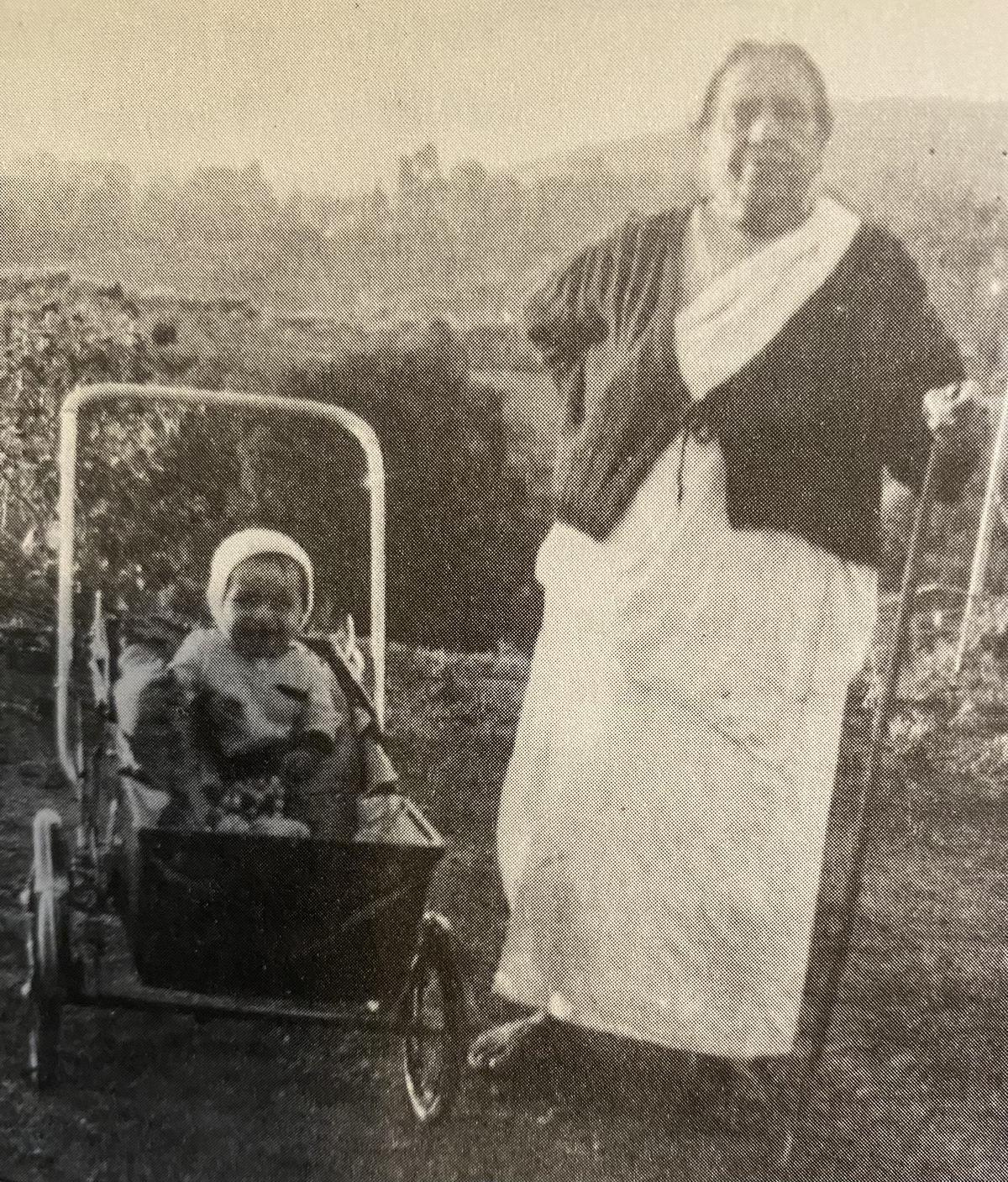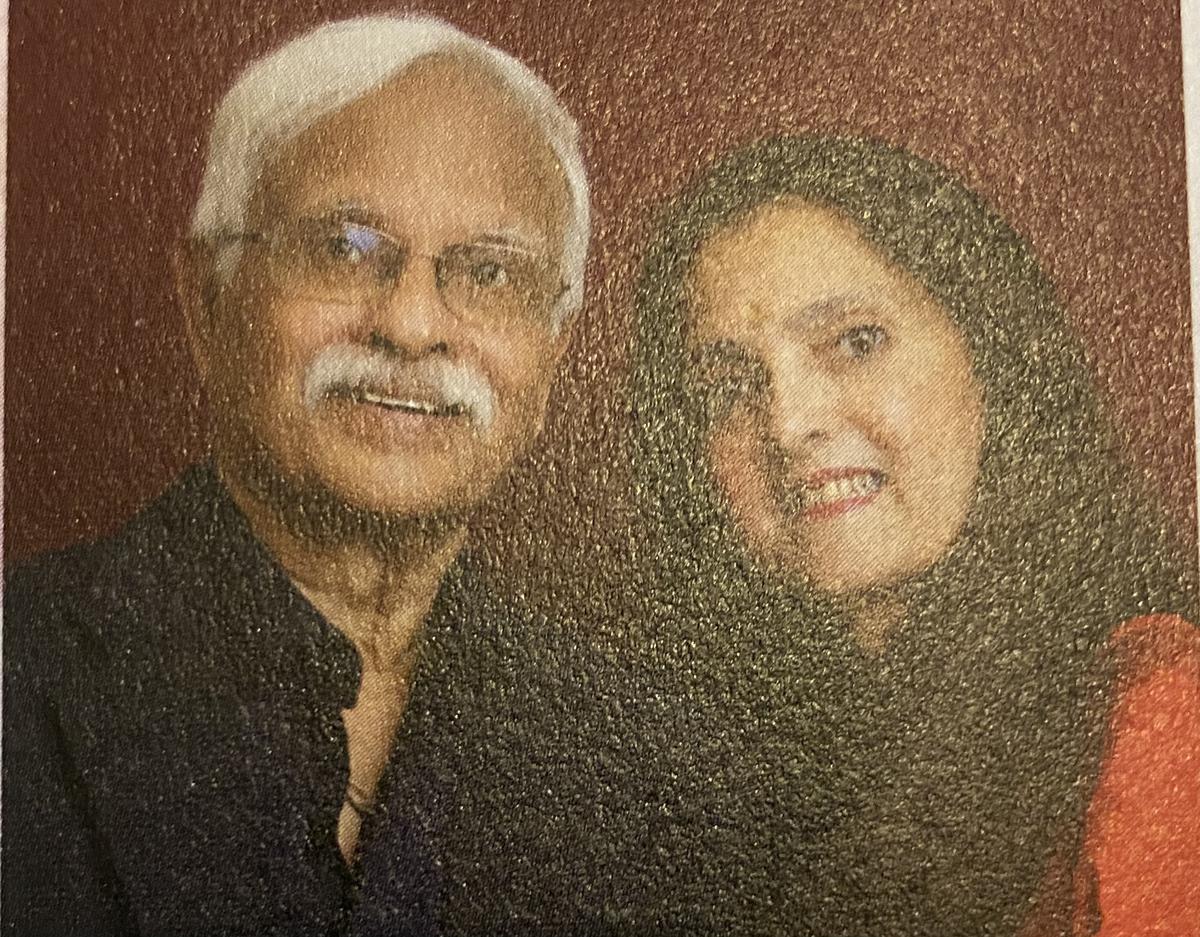[ad_1]
By breaking century old traditions, Parukutty Neithyaramma inspired The Cochin Nair Regulation of 1920, which banned polygamy, legalised Sambandham, and streamlined inheritance rights
By breaking century old traditions, Parukutty Neithyaramma inspired The Cochin Nair Regulation of 1920, which banned polygamy, legalised Sambandham, and streamlined inheritance rights
A sepia-toned photograph of Parukutty Neithyaramma, the queen consort of Raja Rama Varma XV1 of Cochin with her great grandson, Raghu Palat, is an endearing throwback. The regal matriarch stands beside a baby capped and clothed in woolens sitting pretty in a pram.
In the preface of the recently launched book ‘ Destiny’s Child-The Undefeatable Reign of Cochin’s Parukutty Neithyaramma’, written by Raghu Palat and his wife Pushpa, it throws light on the royal who despite her seminal contributions to the people and state of Cochin has been relegated to the back pages of history.
Raghu, a banker and Pushpa, a former journalist have been writing alongside their careers for decades. They began their writing partnership with the first book, The Case That Shook The Empire (2019) on Raghu’s great grandfather Sir Chettur Sankaran Nair, the only Indian member of the Viceroy’s Executive Council at that time.
“We are focusing on writing about Kerala rulers and personages and have begun with members of our family, as it was easier and we already had collected a lot of information on them,” says Raghu.
Breaking a centuries old tradition
Parukutty entered into Sambandham – an informal form of marriage that allowed consensual relationships but no co-habitation between Nairs and Thampurans – at the age of 14 to a prince, 17 years her elder, “with white hair” and sixth in the line of accession. As her sambandhi had not visited her, Parukutty’s father took the bold decision to take her to her sambandhi Kunji Kiddavu’s Palace in Thrippunithura. Cochin was ruled at that time by Sir Kerala Varma V, (1888- 1895) and the kingdom was spread over 1,362 square kilometres comprising Chittur, Cochin, Cranganore, Kanayannur, Mukundapuram, Trichur and Talapilly.
Taken aback by their arrival , Kunji Kiddavu, directed her to be housed in the outhouse. Horrified by its state of disrepair she’s believed to have told the prince, “I did not come all the way to live in this wretched outhouse.” Bemused and impressed at the same time by the courage of the gritty girl, who was ‘not even five feet tall,’, the prince permitted her to stay in the palace.
By moving in, Parukutty became the first Nair woman to break a centuries-old tradition. The inequity of Sambandham meant that the woman and her children could not inherit the property of the partner, who also had no responsibility for their maintenance. To correct this, after Kunji Kiddavu and Parukutty ascended the throne, The Cochin Nair Regulation of 1920 was passed, which banned polygamy, legalised Sambandham, and streamlined inheritance and property rights.
“Imagine the ramifications of this one step taken by the prince and her,” says Pushpa adding that the Nair women and the Thampurattis (the royal women) ostracized her for this daring step. She stopped going to the family temple as snide remarks were hurled at her. Parukutty reportedly once told her great-grandsons, “You have no idea about the bad things they said about me. But I always considered it beneath my notice.”
After extensive research, including conversations with family members, ferreting archives and reading through many documents, including letters, the authors say that Parukutty was a woman who was ahead of her times.

Parukutty Neithayaramma with her great grandson Raghu Palat
On a visit to Chennai, where she was impressed by the Rani of Pudukottai’s spoken English, she urged the prince to have her tutored in the language. The prince, who by now had gauged his consort’s intelligence and acumen also appointed teachers to teach her agriculture and Math along with English.
Rising to the occasion
When by a sudden twist of fate, in 1914 the prince was crowned as King. Parukutty, 39 that year, though caught unawares, rose to the occasion. She graced the Hill Palace, the Raja’s main house, the Thrippunithura Palace in Cochin, with dignity dealing with staff and court attendants with a maturity that surprised even the Raja.
Realising that the British were on the lookout for any reason to annex Cochin to British Malabar, she pitched for an urgent need to boost the State’s finances. By this time, the Raja had begun to depend heavily on her opinions. Parukutty urged him to focus on the plight of the people and not use the State exchequer to fund Capital projects. Soon a slew of public works like the establishment of schools and hospitals were started. She also encouraged the setting up of an agricultural college, something that was close to her heart and was instrumental in increasing the salaries of government employees. For her social work King George V awarded her a Gold Kaiser -i- Hind medal and she came to be known as Lady Rama Varma.
As the couple went about jointly fulfilling their royal duties, Parukutty only grew in stature. She hosted the Nair custom, Thalikettu Kalyanam, a matrilineal form of marriage, for the young girls from the two branches of her tharavad, (ancestral family home) a grand four-day affair. It upset the Thampurattis but Parukutty was strategically planning her daughter’s wedding with Sir Chettur Sankaran Nair’s, son, Ramunni Menon Palat. With the alliance the Cochin State grew in prestige.
A telling incident of her strategic planning to achieve results was also seen in small acts, like securing Lord and Lady Willingdon’s support to build a harbour in Cochin. “The couple met the Willingdons in Ooty. She had the Raja dress in his royal clothes with bejewelled turban and all the accoutrements of royalty. She wore an elegant white sari herself,” says Pushpa. “When they entertained the couple in Cochin, a grand banquet was held at the Durbar Hall. Parukutty knew exactly what would please the Willingdons,” she states.

Raghu and Pushpa Palat
Parukutty surrounded the Raja and herself with loyalists, letting the English Diwan retire and pitching for an Indian one. She also struck down a few appointments and had her relatives placed in important positions. When the Raja fell grievously ill, in 1931, no news was allowed to leave the Palace. Finally, when the end came in 1932, she decided to move out of the palace to Thrissur. The town owes a lot to her as she then got many infrastructure works done, acquired land and built public projects.
Over the last years of her life, Parukutty chose to live between her home in Thrissur and in the hills of Conoor at her house, Homedale, where the charming photo with Raghu was taken. She passed away in 1963 in her home in Coonoor.
“Even as a great grandmother, Parukutty was strict,” remembers Raghu, “She was not indulgent but was loving,” he adds, recounting how she gave only a rupee as kaineettam, a customary gift from elders to children on Vishu, a cultural festival of Kerala that marks its New Year. “Not a paisa more or less.”
Did familiarity come in the way of writing about a family member? No, says Raghu categorically. “Her life and how she lived it speaks for itself. She carved her own destiny. This is a story that had to be told.”
[ad_2]
Source link


